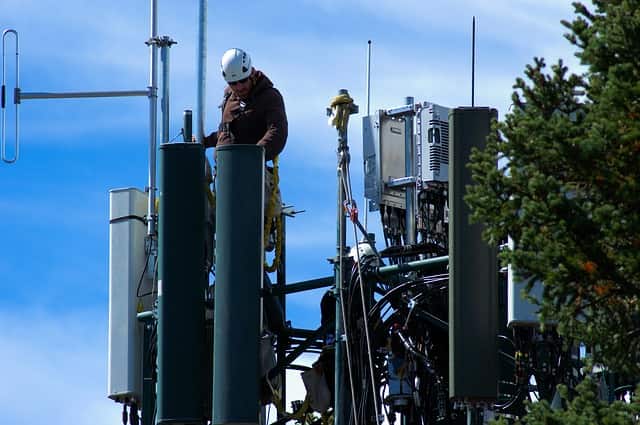Tower engineering professionals are working to quickly upgrade the country’s wireless network to support the required Fifth Generation (5G) specifications. But first, the old network infrastructure must be inspected and retrofitted to hold the new equipment.
Ingenuity, physical labor, and old-school tools are paired with sophisticated, expensive technology to get the 5G networks up and running.
Communication tower employees, including engineers and workers, climb cell towers to perform construction and maintenance activities. As a result, cell tower workers face numerous hazards, including fall hazards, hazards associated with structural collapses and improper rigging and hoisting practices, and “struck-by” hazards.
West Virginia Communications Tower Injury Attorney
Wireless coverage is expanding in rural areas and is certainly a priority in West Virginia, where many mountain areas are underserved.
In West Virginia, thousands of new, small-cell transmitters about the size of shoeboxes have been installed on telephone poles and street lamps but cover only a radius of around a couple of thousand feet. The 5G wireless service will depend just as much on traditional cell towers at least thirty feet and up to 2,000 feet high. In addition, the old towers need to be reinforced to accommodate the additional equipment load.
Hazards of Injury and Death for Tower Workers
Tower workers have to be fearless enough to work at astounding heights and have the stamina to work grueling hours. The cell service tower workers are called to drive several hours to remote locations, and a single shift can last up to 12 hours.
The work is physically demanding and requires employees to spend long periods away from home; hence, job tenure tends to be short, and turnover tends to be high, making adequate training a difficult and a priority.
More cell tower installations and upgrades mean more jobs and better wireless service, but this demand can lead to corner-cutting safety violations and dangerous conditions for workers.
 West Virginia Cell Tower Accident Lawyers
West Virginia Cell Tower Accident Lawyers
West Virginia has benefited from the new connectedness and job opportunities created by the cellular communications industry. But unfortunately, cell tower workers have one of the most challenging jobs. Climbing cell towers requires bravery, dexterity, physical strength, and balance when scaling heights up to two thousand feet above the ground.
The Occupational Health and Safety Administration (OSHA) tells us that the growing demand for wireless and broadcast communications has spurred a dramatic increase in communication tower construction and maintenance.
To erect or maintain communication towers, employees regularly climb towers using fixed ladders, support structures, or step bolts, from 100 feet to heights in excess of 1000 or 2000 feet. Employees climb towers throughout the year, including during inclement weather conditions.
Some of the more frequently encountered hazards include:
- Falls from great heights
- Electrical hazards
- Hazards associated with hoisting personnel and equipment with base-mounted drum hoists
- Inclement weather
- Falling object hazards
- Equipment failure
- Structural collapse of towers
It doesn’t need to be this way. Wireless communications carriers are required to abide by the safety measures established by OSHA in order to keep their workers safe from harm.
Preventing Tower Worker Accidents and Death Needs to Be the Top Priority
Every significant communications provider has a safety manual that must be followed to the letter to keep their tower workers safe.
To the most significant degree possible, management should provide mechanical and physical protection required for personal safety and health. Adequate training in detecting hazards, reporting dangerous conditions, reporting safety violations, and controlling workplace hazards is imperative and is the responsibility of every individual.
Communication Tower Best Practices for Preventing Accidents and Death
- Visual inspection from the ground prior to climbing
- Address any safety concerns or hazards prior to proceeding
- Visual inspection of guy anchors (no digging)
- Tension readings from guy wires
- Measurement of tower plumb
- Visual inspection of FAA lighting for proper function
- Verify operation of photo cell switch
- Check hardware for tightness
- Check weep holes if applicable
- Visually inspect safety climb if applicable
- Visually inspect antennas and transmission lines
- Visually inspect overall condition of the tower, noting any potential problems
- Visually inspect paint condition if applicable
- Visually inspect overall site condition
The Business Structure of Tower Ownership, Construction, and Maintenance Can Make it Complicated to Enforce Safety Standards Across the Board
The business structure of the communication tower industry presents additional challenges to ensuring employee safety. When carriers own their towers and directly employ the employees who build and maintain the
towers and the equipment on them, the carriers have the ability and incentive to ensure safe practices.
The relationship between carriers and tower employees is typically more complicated. For example:
- Towers are often owned by separate corporations (not carriers, generally), and are built by contractors;
- Carriers often contract with “turfing vendors” for the installation and
maintenance of equipment on towers; - Turfing vendors, in turn, may hire other contractors to perform work;
- These contractors may sub-contract tower work to still smaller employers.
As a result, carriers and tower owners may need to find out who is performing work for them or when work is being fulfilled. Thus, responsibility for employee safety is fractured into many layers. Instead of a single company having control and responsibility for employee safety and tower integrity, employer responsibilities can be spread over numerous small employers.
The work is physically demanding and requires employees to spend long periods away from home; hence, job tenure tends to be short, and turnover tends to be high.
In light of these circumstances, ensuring employee safety requires accountability and diligence throughout the contracting process, from the carrier to the employee performing the work.
The families of communication tower employees who had been killed on the job gathered to discuss issues affecting the safety of communication tower employees. They were included in the discussion about best practices that could reduce injuries and fatalities among tower employees. From the OSHA Communication Tower Best Practices Guide
Cell Tower Collapse, Accidents, and Injury Lawyer
If you or someone you love has been injured or killed due to a cell tower accident, we may be able to help. Our attorneys are experienced in a variety of workplace accident cases. Contact Us to learn what our attorneys at Robinette Legal Group, PLLC, can do for you. Call today: 304.594.1800.
Call us today to find out how we can help you.


Brain Injury
While timbering in WV, a heavy equipment operator sustained a permanent brain injury while performing the duties of his job. What price can you put on the loss of a fully functioning, fully reasoning brain? Jeff Robinette was able to negotiate a settlement that was annuitized to provide for this man for the rest of his life.
Crushed Foot Injury
While working in Morgantown, WV for a large national retailer, our client, a young woman in her early twenties, was ordered to use equipment that she was not properly trained to use. In the course of attempting to complete her task, she sustained a severe crush injury to her foot. Due to this incident, our client lost full use of this foot for the rest of her life and was living with chronic, persistent pain.
Our firm was able to obtain a sizable settlement which took care of all her medical bills and future treatment for her foot injury. The settlement was ample enough to allow this young woman to go back to college and retrain for employment which will accommodate her permanent disability.
Crushed Leg Injury
Imagine having your leg crushed so badly in an accident that you have to undergo two surgeries to insert multiple pins and have a rod hammered into the bone just to stabilize the femur. Unfortunately, the first rod inserted into the bone didn’t accomplish the desired effect, so the rod had to be removed and surgically reinserted. Imagine the great pain, the months of therapy and recovery, and the frustration of knowing you can never return to the type of work you have performed for decades.
Jeff Robinette was able to obtain a great enough settlement to pay this man’s medical bills in their entirety and money enough to start a new business so he could work and live a productive life even with his permanent impairment.
Our Awards and Certifications
















